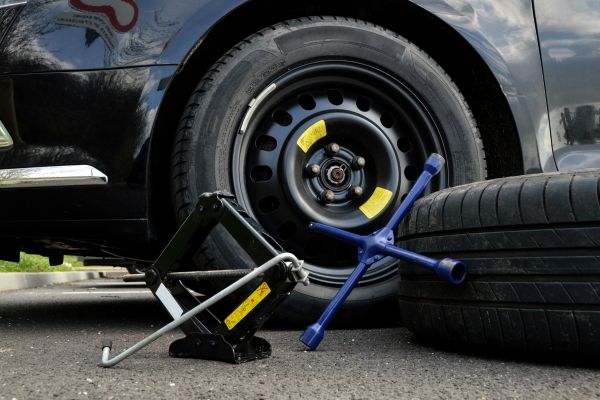There’s nothing quite as frustrating as the sudden thud of a flat tire when you’re in the middle of a drive. Whether you’re on your way to work, heading out for a road trip, or simply running errands, a flat tire can bring your journey to an unexpected halt. Fortunately, knowing how to change a flat tire quickly and safely can turn this stressful situation into a manageable one. With the right approach and a little confidence, you can be back on the road in no time.
Understanding the Importance of Knowing How to Change a Flat Tire
In an era where roadside assistance services are just a call away, many drivers overlook the value of learning how to change a flat tire. Yet, emergencies don’t always occur in ideal circumstances. You could find yourself stuck in a remote area with no cell service or waiting for hours in inclement weather. Knowing how to change a flat tire empowers you to take control of the situation and maintain your safety without relying on others.
Furthermore, tire damage often happens at the most inconvenient moments. A nail on the road, a sharp piece of glass, or simply worn-out treads can all lead to a sudden flat. In these moments, having the confidence and skill to replace the tire yourself saves time, stress, and even money.
Preparation is Key Before You Face a Flat Tire
While the main focus is learning how to change a flat tire, preparation plays a critical role in ensuring you’re ready when the time comes. Every driver should regularly check their vehicle for essential tools such as a spare tire, jack, lug wrench, and a flashlight. It’s also wise to familiarize yourself with your car’s user manual. Different vehicles have specific instructions for safely lifting the car and removing the tire, and having that knowledge beforehand can make the process smoother.
Wearing appropriate clothing, having gloves, and keeping a small mat or towel in the trunk can also be incredibly helpful. Being prepared for a flat tire doesn’t just mean having the right equipment; it means being mentally and physically ready to handle the situation with composure.
Finding a Safe Location to Begin the Tire Change
Safety should always be the top priority when dealing with a flat tire. If you feel the car pulling to one side or hear the telltale flapping sound, your first step should be to slow down gradually and steer to a safe location. Ideally, this would be a flat, straight stretch of road with enough space to keep your distance from passing traffic.
Avoid changing a tire on a curve or hill, as these areas increase the risk of accidents. Once you’ve stopped, engage the parking brake and turn on your hazard lights. These simple but crucial actions alert other drivers to your presence and reduce the likelihood of further complications.
Getting Hands-On: How to Change a Flat Tire Step by Step
Now that you’re safely parked and your vehicle is secure, it’s time to put your knowledge into action. The first thing to do is retrieve your spare tire and tools. Begin by loosening the lug nuts on the flat tire, turning them counterclockwise. It’s important to do this while the tire is still in contact with the ground to prevent it from spinning. Once the nuts are loose, position the jack beneath your car according to the guidelines in your owner’s manual. Slowly raise the vehicle until the flat tire is lifted off the ground.
With the tire elevated, remove the loosened lug nuts and gently take off the flat tire. Place it flat on the ground to avoid it rolling away. Align the spare tire with the lug bolts and carefully slide it into place. Reattach the lug nuts by hand and tighten them as much as possible. Lower the car back to the ground using the jack, then fully tighten the lug nuts in a crisscross pattern to ensure even pressure.
After changing the tire, it’s a good idea to drive cautiously to a tire service center. Spare tires, especially compact ones, are not designed for long distances or high speeds. Having the original tire inspected or replaced as soon as possible is essential for your safety.
Dealing with Challenges Along the Way
Not all tire changes go smoothly, and you may encounter difficulties such as rusted lug nuts, a stuck wheel, or poor weather conditions. In such cases, remaining calm and patient can make all the difference. Gently tapping the wrench or using your body weight can help loosen stubborn bolts. If weather conditions are unfavorable, using protective gear like a raincoat or keeping an umbrella nearby can make the process less daunting.
Additionally, always be mindful of your surroundings. If at any point you feel unsafe, it may be best to wait for help rather than risking injury. Knowing how to change a flat tire is a valuable skill, but it’s equally important to recognize when external help is the safer option.
Maintaining Your Tires to Prevent Future Flats
Prevention is just as important as knowing how to change a flat tire. Regular tire maintenance can significantly reduce the risk of blowouts or punctures. Make it a habit to inspect your tires for signs of wear, such as uneven tread, cracks, or bulges. Ensuring that your tires are inflated to the correct pressure also plays a vital role in extending their lifespan.
Rotating your tires regularly and having them aligned and balanced can further enhance your vehicle’s performance. Investing a little time in tire care not only improves safety but also contributes to better fuel efficiency and smoother driving.
Staying Confident and Prepared Behind the Wheel
Ultimately, learning how to change a flat tire is about more than just technical steps. It’s about fostering independence, ensuring your safety, and becoming a more responsible driver. By mastering this skill, you’re taking an important step toward being prepared for the unexpected.
Even if you never have to put your knowledge to use, having the confidence that you can change a flat tire brings peace of mind. That confidence is something every driver deserves to have, and it begins with preparation, awareness, and the willingness to learn.
Conclusion: Your Road to Safety Starts with a Single Skill
A flat tire might seem like a major inconvenience, but with the right mindset and knowledge, it becomes a manageable task. Understanding how to change a flat tire quickly and safely transforms an unpredictable challenge into an opportunity to take control. By staying prepared, practicing good tire maintenance, and mastering this essential skill, you’ll not only safeguard your journey but also empower yourself with a newfound sense of confidence. So the next time your tire fails, you’ll be ready—not just to fix it, but to move forward with assurance and ease.



